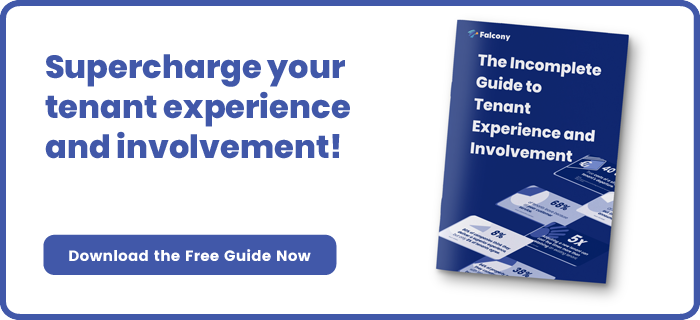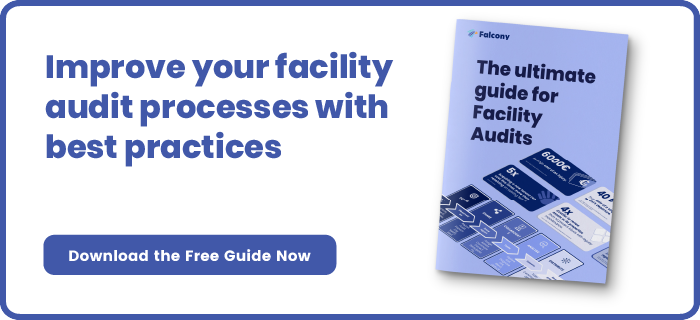Different Types of Tenant Satisfaction Surveys
Tenant satisfaction surveys are essential tools for property managers and landlords seeking to enhance the living experience of their tenants.
By collecting feedback, they can identify areas for improvement, foster community involvement, and ultimately retain tenants for longer periods. This blog post explores various types of tenant satisfaction surveys, their purposes, and how they can be effectively implemented.
General Satisfaction Surveys
General satisfaction surveys are broad assessments that gauge tenants' overall contentment with their living conditions. These surveys typically cover various aspects of the rental experience, including property maintenance, amenities, community services, and the responsiveness of management. By asking tenants to rate their satisfaction on a scale (for example, 1 to 5), property managers can quickly identify strengths and weaknesses in their offerings.
Implementation:
These surveys can be distributed annually or bi-annually, either through online platforms or paper formats. It is crucial to ensure anonymity to encourage honest feedback, and providing a space for open-ended comments can yield valuable qualitative insights.
Benefits:
- Provides a comprehensive view of tenant satisfaction across multiple areas.
- Identifies specific strengths and weaknesses, enabling targeted improvement efforts.
- Helps in benchmarking satisfaction levels over time to track progress.
Maintenance and Service Quality Surveys
Maintenance and service quality surveys focus specifically on the effectiveness and timeliness of property maintenance services. Tenants are asked to rate their experiences regarding the resolution of maintenance requests, the professionalism of staff, and the overall quality of repairs. This type of survey is crucial for ensuring that tenants feel their concerns are addressed promptly and satisfactorily.
Implementation:
Surveys can be conducted immediately after a maintenance request has been fulfilled, providing timely feedback on the service. Consider including questions about the ease of reporting issues, as this can influence tenant perceptions of service quality.
Benefits:
- Helps pinpoint issues related to maintenance processes, leading to faster resolutions.
- Enhances the overall service quality by highlighting areas needing attention.
- Encourages accountability among maintenance staff and reinforces a culture of responsiveness.
Move-In and Move-Out Surveys
Move-in and move-out surveys provide insights into the tenant experience during their transition into or out of a property. Move-in surveys can evaluate the onboarding process, the condition of the property upon arrival, and the clarity of lease agreements. Conversely, move-out surveys help assess tenants' reasons for leaving, their satisfaction with the move-out process, and any final impressions of the property.
Implementation:
Move-in surveys should be administered shortly after tenants take possession of their units, while move-out surveys can be provided as part of the exit process. Both surveys should include specific questions about expectations versus reality to identify potential gaps.
Benefits:
- Facilitates improvements in the onboarding process for new tenants, ensuring a smooth transition.
- Identifies factors contributing to tenant turnover, aiding in retention strategies.
- Helps property managers understand the tenant experience from start to finish, allowing for more tailored service.
Amenities and Facilities Surveys
Amenities and facilities surveys concentrate on the specific features offered within a property, such as fitness centres, communal areas, and parking facilities. These surveys can gauge tenants' satisfaction with the availability, maintenance, and usage of these amenities, as well as their overall value to tenants.
Implementation:
Conduct these surveys at least once a year, ideally after community events that utilise these amenities. Include questions that gauge interest in potential new amenities to gather insights into what tenants would like to see.
Benefits:
- Assesses the effectiveness of amenities in enhancing tenant satisfaction and identifies underutilised facilities.
- Provides insights for future investments in property features that align with tenant preferences.
- Supports the creation of community-building initiatives centred around popular amenities.
Community Involvement Surveys
Community involvement surveys focus on tenants' sense of belonging and their active participation within the property’s community. Questions may include inquiries about social events, neighbour interactions, and overall community spirit. These surveys are vital for understanding how well a property fosters a positive community atmosphere, which can significantly influence tenant retention.
Implementation:
These surveys can be distributed before or after community events to measure involvement levels and satisfaction. Encourage participation by offering incentives for completing the survey, such as discounts on rent or entry into a prize draw.
Benefits:
- Promotes a sense of community among tenants, which can lead to longer tenancy durations.
- Identifies opportunities for events and initiatives to enhance involvement and improve social interactions.
- Provides property managers with insights on tenant interests, enabling the creation of relevant and appealing activities.
Sense of Safety and Security Surveys
Sense of safety and security surveys specifically assess tenants’ feelings regarding their safety within the property and the surrounding area. These surveys may include questions about the effectiveness of security measures (such as locks, lighting, and surveillance), the perceived safety of common areas, and how secure tenants feel when entering or leaving the property. Gathering this information helps property managers understand and address tenant concerns related to safety.
Implementation:
Surveys can be conducted annually or after significant incidents, such as crime reports or security updates. Incorporating questions about recent changes to security measures can also provide insight into their effectiveness.
Benefits:
- Provides insights into tenants' perceptions of safety, enabling property managers to take actionable steps to enhance security.
- Allows for the implementation of additional security measures if necessary, ensuring tenant comfort.
- Reinforces tenants' feelings of being valued and cared for, contributing to overall satisfaction.
Communication and Feedback Surveys
Effective communication is crucial for maintaining positive tenant relations. Communication and feedback surveys focus on how well property management communicates with tenants, the channels used (such as emails, newsletters, or community boards), and the responsiveness to tenant feedback. This survey type helps assess whether tenants feel informed and involved.
Implementation:
Regularly scheduled surveys can be sent out after significant communications or changes in management policies. Consider using digital platforms that allow for quick responses and real-time analytics to track satisfaction levels.
Benefits:
- Identifies preferred communication methods for tenants, ensuring that management communicates through channels that resonate with residents.
- Enhances management's ability to address tenant concerns promptly, fostering a proactive approach to tenant relations.
- Builds trust and transparency, encouraging tenants to voice their concerns and suggestions.
Sustainability and Environmental Impact Surveys
With growing awareness of environmental issues, sustainability and environmental impact surveys can gauge tenants' opinions on a property's sustainability practices. Questions might cover recycling programmes, energy-efficient systems, and the management of communal green spaces. Understanding tenants' perceptions in this area can lead to improved sustainability initiatives that resonate with tenants' values.
Implementation:
Conduct these surveys annually, aligning them with Earth Day or other environmental initiatives. Encourage tenants to provide suggestions for improving sustainability practices, which can lead to innovative ideas and enhanced community involvement.
Benefits:
- Highlights opportunities for environmental improvements, demonstrating a commitment to sustainability.
- Strengthens tenants' commitment to sustainable living practices, fostering a shared sense of responsibility.
- Enhances the property's reputation and attractiveness to environmentally conscious tenants.
Post-Event Surveys
Post-event surveys are conducted after community events or activities organised by property management. These surveys gather feedback on the event's organisation, enjoyment, and overall impact on community building. They can help refine future events and ensure that they meet tenant expectations.
Implementation:
Send these surveys within a few days of the event while the experience is still fresh in tenants' minds. Consider including both rating questions and open-ended feedback sections to capture detailed responses.
Benefits:
- Enhances future event planning based on tenant preferences, ensuring that events cater to the interests of the community.
- Encourages greater participation in community activities by addressing concerns or suggestions raised by tenants.
- Reinforces the property management’s commitment to fostering community connections.
Accessibility and Inclusivity Surveys
Accessibility and inclusivity surveys assess how well a property meets the needs of all tenants, including those with disabilities. Questions might cover access to facilities, communication methods, and the availability of support services. This type of survey is vital for ensuring that all tenants feel welcomed and accommodated within the community.
Implementation:
Conduct these surveys periodically, ensuring that they are accessible to all tenants, including those with disabilities. Provide multiple formats for feedback, such as online, paper, or verbal surveys, to ensure inclusivity.
Benefits:
- Identifies areas for improving accessibility and inclusivity, making the property more welcoming for all residents.
- Enhances tenant satisfaction by ensuring all voices are heard and considered in property management decisions.
- Promotes a culture of inclusivity, fostering a positive community environment.
Longitudinal Surveys
Longitudinal surveys involve collecting tenant feedback over time, allowing property managers to track satisfaction trends and changes in tenant sentiment. By administering surveys at regular intervals, property managers can measure the impact of changes made in response to previous feedback and assess ongoing satisfaction levels.
Implementation:
Establish a schedule for these surveys, such as quarterly or bi-annually, to ensure a steady flow of data. Incorporating consistent questions over time will facilitate meaningful comparisons and analysis.
Benefits:
- Provides a comprehensive view of tenant sentiment over time, helping property managers identify patterns and long-term trends.
- Enables proactive management of tenant relationships by identifying emerging issues before they escalate.
- Allows for benchmarking against past performance, helping property managers to assess the effectiveness of implemented changes.
Conclusion
Conducting tenant satisfaction surveys is an invaluable practice for property managers and landlords looking to improve tenant experiences and retain residents. By implementing various types of surveys, property management can gain insights into specific areas of concern, ultimately leading to enhanced living conditions and tenant loyalty.
Regularly seeking tenant feedback not only demonstrates a commitment to improvement but also fosters a positive community atmosphere where tenants feel valued and heard. By investing in a range of survey types, property managers can tailor their approaches to meet the unique needs of their tenants, ensuring a harmonious and satisfied community. In an increasingly competitive rental market, understanding and responding to tenant needs through effective surveys can be the key to long-term success.
If your organisation is looking for a 360° tenant experience tool to involve all employees, service providers and tenants to improve the quality of your operations, have a look at the 30-day free trial of Falcony | Tenant Portal:
We are building the world's first operational involvement platform. Our mission is to make the process of finding, sharing, fixing and learning from issues and observations as easy as thinking about them and as rewarding as being remembered for them.
By doing this, we are making work more meaningful for all parties involved.
More information at falcony.io.

Related posts
What is Tenant Sentiment Analysis?
In today’s competitive property management landscape, understanding tenant sentiment has become a...
7 Typical Tenant Experience Issues in Business Parks and Offices
In the competitive landscape of commercial real estate, the tenant experience plays a pivotal role...
How to Create a Successful Tenant Involvement Strategy in Commercial Real Estate?
In commercial real estate, fostering a sense of community and engagement among tenants is essential...







